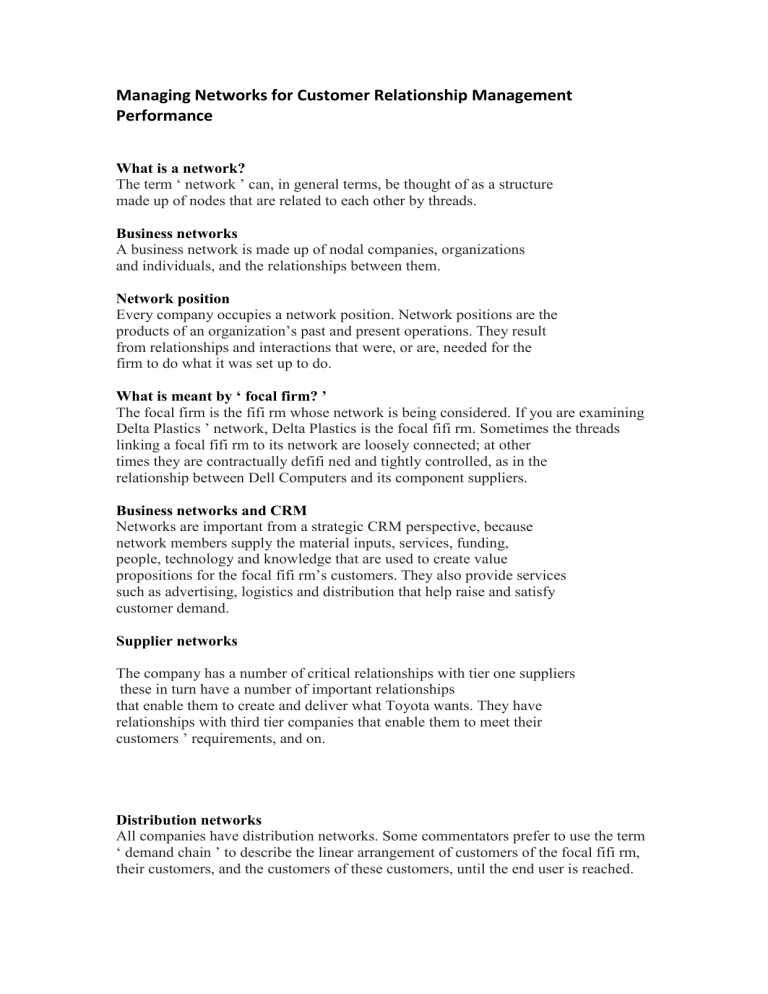
Managing Networks for Customer Relationship Management Performance What is a network? The term ‘ network ’ can, in general terms, be thought of as a structure made up of nodes that are related to each other by threads. Business networks A business network is made up of nodal companies, organizations and individuals, and the relationships between them. Network position Every company occupies a network position. Network positions are the products of an organization’s past and present operations. They result from relationships and interactions that were, or are, needed for the firm to do what it was set up to do. What is meant by ‘ focal firm? ’ The focal firm is the fifi rm whose network is being considered. If you are examining Delta Plastics ’ network, Delta Plastics is the focal fifi rm. Sometimes the threads linking a focal fifi rm to its network are loosely connected; at other times they are contractually defifi ned and tightly controlled, as in the relationship between Dell Computers and its component suppliers. Business networks and CRM Networks are important from a strategic CRM perspective, because network members supply the material inputs, services, funding, people, technology and knowledge that are used to create value propositions for the focal fifi rm’s customers. They also provide services such as advertising, logistics and distribution that help raise and satisfy customer demand. Supplier networks The company has a number of critical relationships with tier one suppliers these in turn have a number of important relationships that enable them to create and deliver what Toyota wants. They have relationships with third tier companies that enable them to meet their customers ’ requirements, and on. Distribution networks All companies have distribution networks. Some commentators prefer to use the term ‘ demand chain ’ to describe the linear arrangement of customers of the focal fifi rm, their customers, and the customers of these customers, until the end user is reached. Management of networks Single companies, particularly in highly concentrated industries, can exert signififi cant inflfl uence over business networks. New business start-ups are typically faced with the challenge of designing their networks from scratch. They have no relationships so they have to create the relationships that will enable them to create and deliver the desired value proposition and customer experience, in effect facing the same challenges as those charged with responsibility for strategic CRM. These challenges fall into three major categories: 1. Identify network requirements: companies need to identify the business activities that must be performed by network members to create and deliver value for and from their chosen customers. 2. Acquire network expertise : companies will need to evaluate their current network position to identify current network members and assess whether they have the resources and commitment to perform the activities required. 3. Manage network performance : companies will need to brief network members so that they understand the focal company’s customers and their role in creating value for them. Management in networks Not all network relationships are alike. The challenge of managing network relationships is all the more apparent when you consider how much variety exists. Network relationships vary in terms of their importance, intensity, closeness, strength, adaptation, commitment and power distribution.


